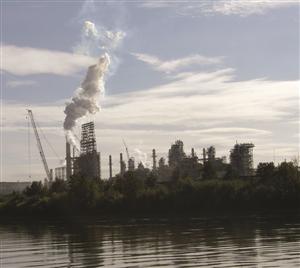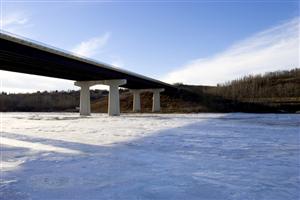Factors Affecting Water and Sediment Quality: Pollution
Pollutants can be released into the environment as gases, liquids, dissolved substances, or particulates, and can enter aquatic ecosystems by atmospheric deposition, soil erosion, seepage, runoff, or direct discharge. Pollution that can be attributed to a single source, such as a sewage outfall, is known as point source pollution. Pollution that originates from diffuse sources rather than from one discrete location—for example, runoff that carries pesticides into the water from agricultural fields—is known as non-point source pollution.
Pollution can be released into the environment with different frequencies. Some sources of pollution may discharge continuously, while others may release pollution only occasionally. Sources of pollution can also vary periodically or cyclically—for example, in the spring when ice begins to melt, pollutants deposited on land during the winter months can be flushed into the river system. Still other sources of pollution—including accidental releases of contaminants, and pollution associated with disasters such as fires and floods—occur infrequently.
Effects of Pollution
The effect of pollution on aquatic environments depends on pollution patterns as well as environmental conditions. For example, pollution during periods of high river flow may result in lower concentrations of contaminants than the same discharge released during periods of low river flow. Pollution prevention and management strategies must take into account the amount and timing of pollution as well as its interaction with variable natural conditions.
The effect of pollution also depends on the type of pollutant. Pollutants in the water column can undergo chemical transformation, be taken up by aquatic animals or plants, flushed downstream, or adsorb (attach) to aquatic sediments. Some pollutants can persist for years in sediments and can be re-released into the water column depending on environmental conditions (e.g., pH, dissolved oxygen levels).










